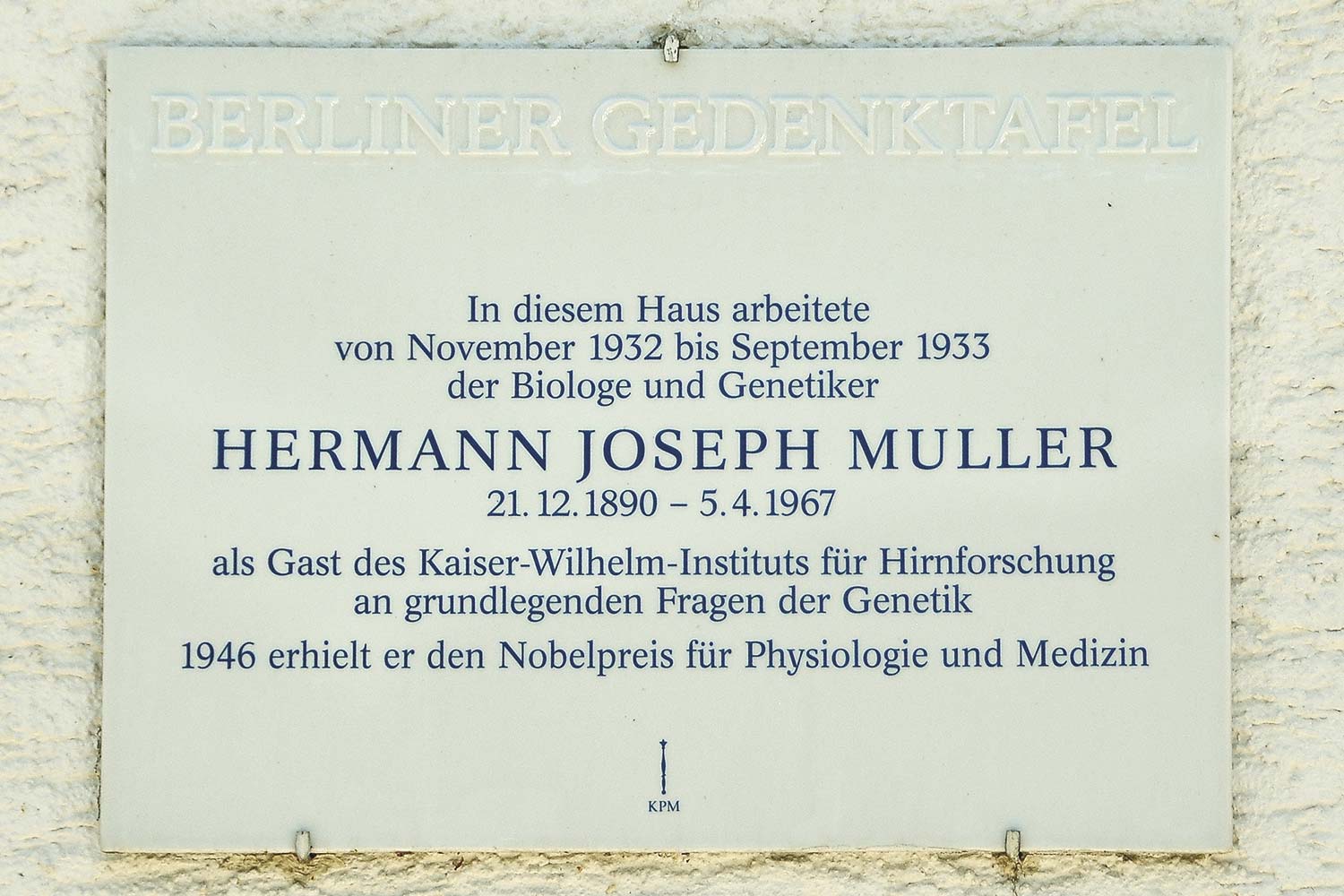15Hermann Joseph Muller
December 21, 1890 in Manhattan, New York, USA –
April 5, 1967 in Indianapolis, Indiana, USA

The biologist and geneticist Hermann Joseph Muller became the first researcher to generate gene mutations through experimental means. This discovery – that X-rays introduce changes in an organism’s genome – led to his receipt of the Nobel Prize in Physiology or Medicine in 1946.
Muller studied biology in New York from 1907 to 1910. He received his doctorate in 1915 from Columbia University, under the supervision of geneticist Thomas H. Morgan, who was also later awarded a Nobel Prize. After stays at various universities, he was appointed to a professorship at the University of Texas at Austin in 1925. It was there, a year later, that Muller observed spontaneous mutations of genes in fruit flies. He could deliberately produce such mutations by irradiating the fruit flies with X-rays, thus proving that high-energy X-rays alter an organism’s genes.
An important event occurred at the 5th International Congress of Genetics in Berlin in 1927, when Muller first met Nikolai W. Timoféeff-Ressovsky. This encounter promised fruitful collaborations, so Muller received a Guggenheim Fellowship for a guest stay at the Kaiser Wilhelm Institute for Brain Research in Berlin-Buch from 1932 to 1933. Their work was interrupted in March 1933, when troops from the National Socialist paramilitary Sturmabteilung (SA) stormed the institute and arrested Muller, among others. Upon his release, secured by Gustav Krupp von Bohlen und Halbach, Muller left Germany and stayed in Leningrad and Moscow until 1937. In 1938 Muller went to Edinburgh, where he worked with Charlotte Auerbach, who demonstrated the mutagenic effects of chemicals.
Muller later developed the ”linear no threshhold“ or LNT model. It states that even low doses of radiation are harmful, because radiation dose and cancer cases are linearly related, without a threshold.
In 1940 Muller returned to the USA, taking up a position at Amherst College in Massachusetts until 1945. In 1945, Muller became a professor of zoology at Indiana University in Indianapolis. There he succumbed to congestive heart failure in 1967.
Muller‘s findings had an impact beyond medicine and science. He frequently warned of the long-term dangers of fallout from nuclear war or nuclear testing, and this led to increased public scrutiny of atomic programs. In 1959, the International Commission on Radiation Protection adopted Muller‘s LNT model.
More information on the cooperation between Muller, Timoféeff-Ressovsky and Max Delbrück and its importance for genetics can be found in the book ”Genetiker in Berlin-Buch/Geneticists in Berlin-Buch“, published in German and English by the Max Delbrück Center for Molecular Medicine (MDC).
series of commemorative plaques, Königliche Porzellan Manufaktur Berlin, 2008